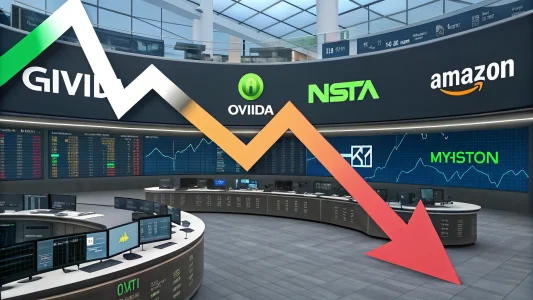Numerous factors influencing the rise and fall of mortgage rates. One of the key reasons behind the recent surge in mortgage rates, despite the Federal Reserve’s decision to cut interest rates, is the significant increase in the MOVE Index. This article aims to provide an in-depth understanding of the relationship between mortgage rates, the 10-year treasury rate, individual credit scores, and the MOVE Index.
Table of Contents
ToggleUnderstanding the 10-year treasury rate’s role
Mortgage rates are primarily a function of the 10-year treasury rate. This rate serves as a benchmark that guides mortgage rates. When the 10-year treasury rate increases, mortgage rates tend to follow suit. Recently, the 10-year treasury rate has seen a significant increase, primarily due to a strong jobs report. This surge in the 10-year treasury rate has directly contributed to the rise in mortgage rates.
View this post on Instagram
A post shared by Taylor Sohns – CFP®, CIMA®, MBA – Finance (@lifegoalinvestments)
How individual credit scores impact mortgage rates
Another factor that influences mortgage rates is the individual’s unique credit score. A credit score is a numerical expression based on a level analysis of a person’s credit files, representing the creditworthiness of an individual. A higher credit score indicates a lower risk for the lender, which can result in a lower mortgage rate for the borrower. Conversely, a lower credit score can lead to higher mortgage rates.
The MOVE Index’s influence on mortgage rates
The MOVE Index, which measures the volatility of interest rates, is another crucial factor that impacts mortgage rates. Over the past few weeks, the MOVE Index has seen a 30% increase, which has significantly impacted mortgage rates.
The MOVE Index and the spread, the difference between the interest rate on a mortgage and the 10-year treasury rate, have a very tight relationship. The spread widens as the MOVE Index increases, indicating higher interest rate volatility. This widening of the spread has been another contributing factor to the recent rise in mortgage rates.
Interest rate volatility and its role
The spread increases when interest rate volatility increases because banks are building is a larger cushion against uncertainty and risk. As interest rates become more volatile, especially to the upside, it puts stress on the financial lives of borrowers, increasing the risk that they won’t be able to pay their mortgage.
This increased risk is reflected in the spread, which widens to account for the potential for higher default rates. As a result, mortgage rates increase as banks seek to protect themselves against this heightened risk.
Wrapping it up
In conclusion, if you’re looking for lower mortgage rates, you want lower 10-year treasury rates and interest rates to stop being so volatile. The recent surge in mortgage rates is a direct result of the increase in the 10-year treasury rate, the widening of the spread due to the rise in the MOVE Index, and the increased risk associated with higher interest rate volatility. Understanding these factors can help borrowers navigate the complex world of mortgage rates and make informed decisions about their financial future.
Frequently Asked Questions
Q. What is the role of the 10-year treasury rate in mortgage rates?
Mortgage rates are primarily a function of the 10-year treasury rate, which serves as a benchmark that guides them. When the 10-year treasury rate increases, mortgage rates tend to follow suit. The 10-year treasury rate has recently seen a significant increase, primarily due to a strong jobs report. This surge in the 10-year treasury rate has directly contributed to the rise in mortgage rates.
Q. How do individual credit scores impact mortgage rates?
Another factor that influences mortgage rates is the individual’s unique credit score. A credit score is a numerical expression based on a level analysis of a person’s credit files, representing the individual’s creditworthiness. A higher credit score indicates a lower risk for the lender, which can result in a lower mortgage rate for the borrower. Conversely, a lower credit score can lead to higher mortgage rates.
Q. What is the influence of the MOVE Index on mortgage rates?
The MOVE Index, which measures the volatility of interest rates, is another crucial factor that impacts mortgage rates. Over the past few weeks, the MOVE Index has seen a 30% increase, which has significantly impacted mortgage rates. The MOVE Index and the spread, which is the difference between the interest rate on a mortgage and the 10-year treasury rate, have a very tight relationship. The spread widens as the MOVE Index increases, indicating higher interest rate volatility. This widening spread has been another contributing factor to the recent rise in mortgage rates.
Q. How does interest rate volatility affect mortgage rates?
The spread increases when interest rate volatility increases because banks are building a larger cushion against uncertainty and risk. As interest rates become more volatile, especially to the upside, it puts stress on borrowers’ financial lives, increasing the risk that they won’t be able to pay their mortgage. This increased risk is reflected in the spread, which widens to account for the potential for higher default rates. As a result, mortgage rates increase as banks seek to protect themselves against this heightened risk.
Q. What factors should I consider for lower mortgage rates?
If you’re looking for lower mortgage rates, you want lower 10-year treasury rates and interest rates to stop being so volatile. The recent surge in mortgage rates is a direct result of the increase in the 10-year treasury rate, the widening of the spread due to the rise in the MOVE Index, and the increased risk associated with higher interest rate volatility. Understanding these factors can help borrowers navigate the complex world of mortgage rates and make informed decisions about their financial future.

















